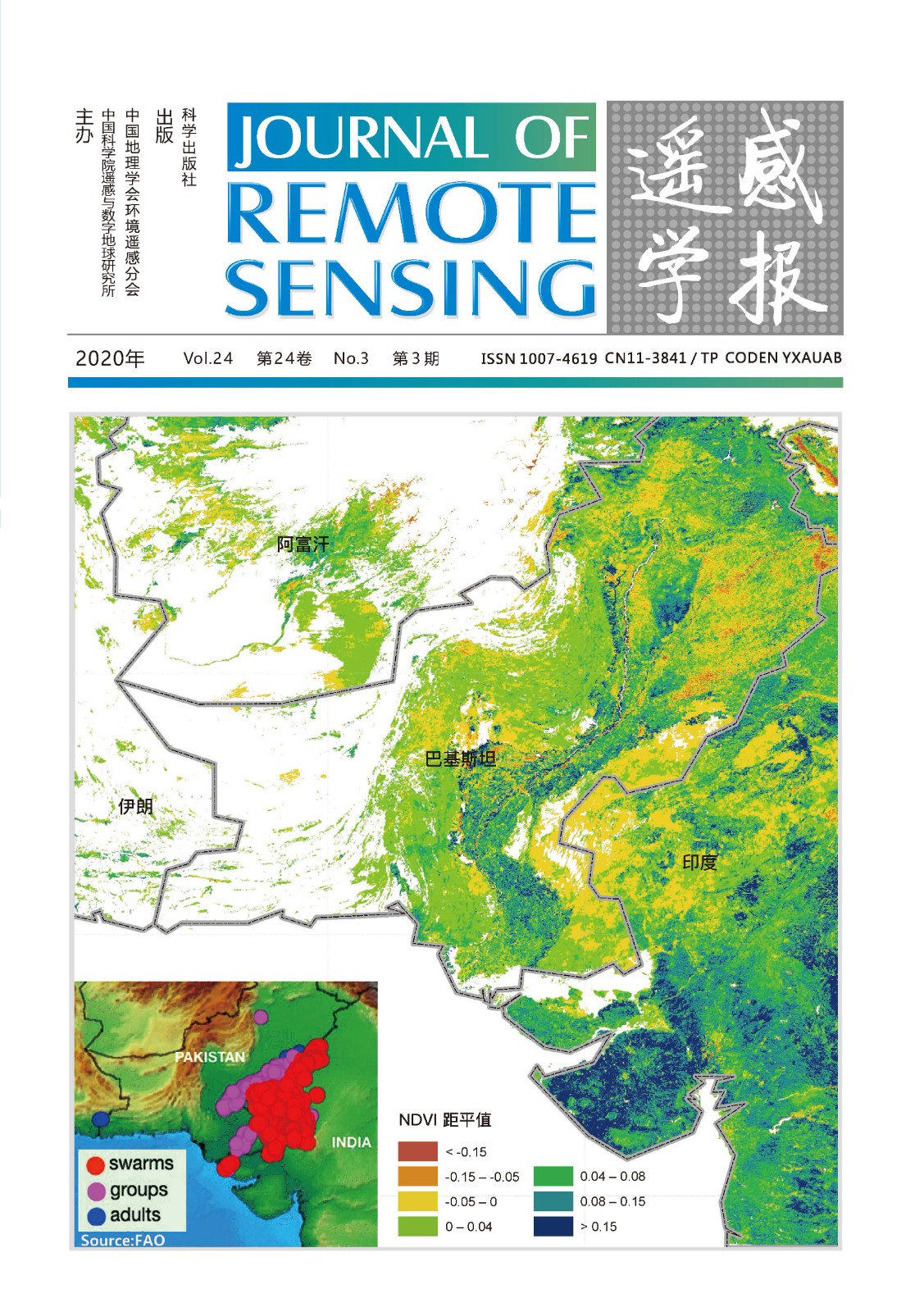下载中心
优秀审稿专家
优秀论文
相关链接
首页 > 2020年第3期封面报道
2020年第3期封面报道
沙漠蝗群对印巴边境植被影响状况
封面主图为印巴边境区域2020年2月2日归一化植被指数与历史同期(2010-2019)该指数平均值的距平图,数据源采用MODIS 13Q1的250 m分辨率归一化植被指数16天最大值合成数据。左下角小图为联合国粮食及农业组织(FAO)于2020年2月3日发布的印巴边境沙漠蝗群分布图。近期沙漠蝗群对印巴边境农业和草原植被造成的影响;从气候学角度,沙漠蝗群历史上曾经或者未来是否向印度东边迁飞而进入中国,相关研究结果详见本期第326-332页“沙漠蝗群对印巴边境植被的影响及其未来可能发展趋势”。
Desert Locust Swarms impact on the location vegetation along India-Pakistan border
The main image shows the anomaly map between the Normalized Difference Vegetation Index (NDVI,obtained on February 2, 2020) and the average of the index in the historical period (2010—2019) on India-Pakistan border. The 250 m 16-day Maximum Value Composite (MVC) of NDVI from the MODIS MOD13Q1 product is accepted to detect Desert Locust Swarms. The lower left image is the distribution map of Desert Locust Swarms on India-Pakistan border released by FAO(Food and Agriculture Organization of the United Nations)on February 3, 2020. What are the impacts of Desert Locust Swarms on agriculture and grassland vegetation along the India-Pakistan border? Under the perspective of climatology, is it possible that the Desert Locust Swarms has been entered China in the past, will it expand to the east of India and China in the future? For more details about the study , please see the short communication“Desert Locust Swarms impact on the local vegetation along India-Pakistan border and their possible development trends” in the current issue( page326-332).


